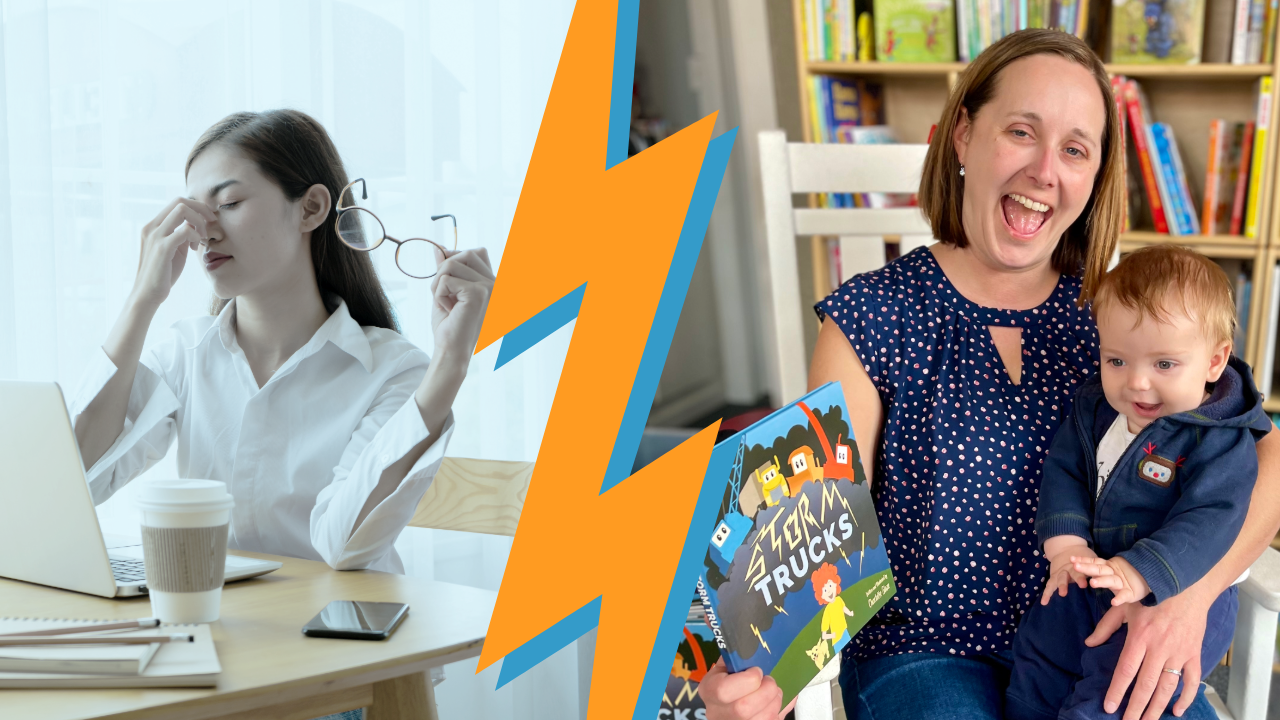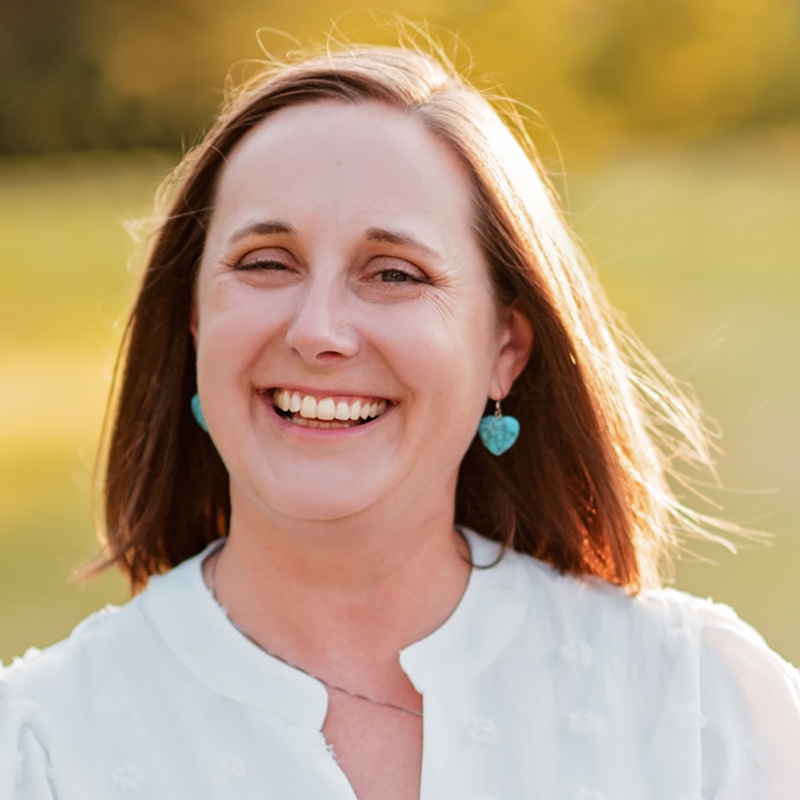Have you ever dreamed of seeing your story on a bookshelf? That was my dream, too. And while my path didn’t go the traditional route, I want to share what I’ve learned in hopes that it helps you move forward—wherever you’re headed on your writing journey.
Watch the YouTube Video:
Need More Help Self-Publishing?
Why I Chose to Self-Publish My Picture Book
This year, I became a published picture book author with Storm Trucks, a story about a boy who loves trucks but fears thunderstorms… until he imagines the trucks fighting the storm itself.
But Storm Trucks didn’t appear out of nowhere. It took years of writing, illustrating, learning, and finally, making the leap into self-publishing.
My Creative Journey (and How It Shifted Over Time)
I started writing when I was pregnant with my daughter, Lily. I had left my job as a preschool teacher due to extreme nausea and suddenly had time on my hands. So, I began a young adult novel.
That first draft taught me a lot. I sought feedback, found SCBWI, and met mentors and friends who encouraged me to keep writing.
Eventually, I gravitated toward picture books. They were fast to draft, fun to write, and deeply creative. I queried agents for years, improving my stories with each submission. But I also noticed something: many agents wanted author-illustrators.
So I leaned into my background in art and started learning how to illustrate books myself.
Learning to Illustrate Picture Books
One sketch isn’t the same as a whole book! I took a course called Children’s Book Pro to bridge the gap between my graphic design training and storytelling through illustration. That course gave me a solid foundation and introduced me to my incredible critique group (we still meet regularly, even across continents!).
From there, I built a picture book dummy—sketches for each page and a few fully finished illustrations to show my style. I began querying again, but still didn’t land an agent.
My Turning Point: Self-Publish or Keep Waiting?
I had a choice: keep creating and querying new dummies, or finish the one I had. I wasn’t trying to be Shakespeare—I just wanted to complete a book and share it with readers.
So I enrolled in Self-Publishing Pro, a course from the same teachers who taught me illustration, and committed to finishing and publishing Storm Trucks myself.
5 Big Truths I Learned About Self-Publishing
1. There’s More Than One Path
There’s no single “right” way to publish. Here are your main options:
-
Traditional Publishing (Big 5) – Only accessible through an agent.
-
Small Press – May accept unagented submissions and often serve niche markets.
-
Hybrid Publishing – You pay for services like editing, layout, and marketing.
-
Self-Publishing – You do it all yourself or hire freelancers.
I chose the DIY path, using Amazon KDP and an overseas printer for hardcovers.
2. It’s a Lot of Work
Self-publishing means wearing every hat:
-
Writer
-
Editor
-
Designer
-
Illustrator
-
Marketer
-
Distributor
Fortunately, I had design experience. But even with skills, I had to decide what to outsource and what to tackle myself.
3. It Costs Money
Publishing isn’t free—especially when you want professional results. Here’s what I was quoted from different printers or publishers to print 500 copies of Storm Trucks:
-
Hybrid Publisher (no books): $1,975
-
American Printer: $3,418
-
Printer in China (my choice): $1,607
-
IngramSpark: $4,829 for 500
-
Amazon KDP (paperback only): $2,100
I chose the printer in China, but not just because of price. The quality was excellent as well.
TIP: Don’t skimp on illustration or cover design. People do judge books by their covers.
4. You Can Fund Your Book
If paying upfront isn’t an option, there are ways to raise funds:
-
Self-funding
-
Credit (not recommended!)
-
Crowdfunding (Kickstarter/Indiegogo)
I used Kickstarter to raise money for printing. I offered tiered rewards—from eBooks to signed copies and sticker bundles. With 40 backers, I met my goal of $2,000. Most were friends and family, but a few discovered my project online.
5. Printing Is Not the End
Printing your book is just the beginning. Next comes marketing—a whole new challenge.
You’ll need:
-
A document with all your book info (title, ISBN, bio, keywords, blurb, etc.)
-
Press materials: images, pitch letters, marketing copy
-
Custom letters to bloggers, podcasters, libraries, and bookstores
-
Promotional items like bookmarks, postcards, and stickers
Marketing takes time and strategy—but it’s how your book finds readers.
Where to Sell Your Book
Your book can exist in multiple formats—each with its own sales channels.
Hardcover/Paperback:
Sell in person, on your own website, at events, or wholesale to stores and libraries.
eBook:
List on Amazon, Apple Books, Barnes & Noble, Google Books, Kobo, OverDrive, and more.
Audiobook:
Distribute through platforms like Audible or find services tailored to children’s books.
Need More Help Self-Publishing?
Final Thoughts
Self-publishing a picture book is a huge undertaking—but it’s also incredibly rewarding. You get full creative control, direct contact with your audience, and the satisfaction of holding a finished book in your hands.
REMEMBER THIS: You don’t need permission to make your book. You just need Craft, Courage, and Commitment.
Whether you’re still drafting or deciding between publishing paths, I hope my journey helps illuminate yours.
Feel free to check out Storm Trucks or reach out with questions—I’d love to encourage you on your path!




I wrote a story years ago about my grandmother. I have been on a children’s writing site but my book is not the 3 step process that meets a typical children’s picture book. I want to self publish. I have let others read it to their children and have gotten honest reviews. I have also illustrated but need help getting the hard cover book produced and then market.